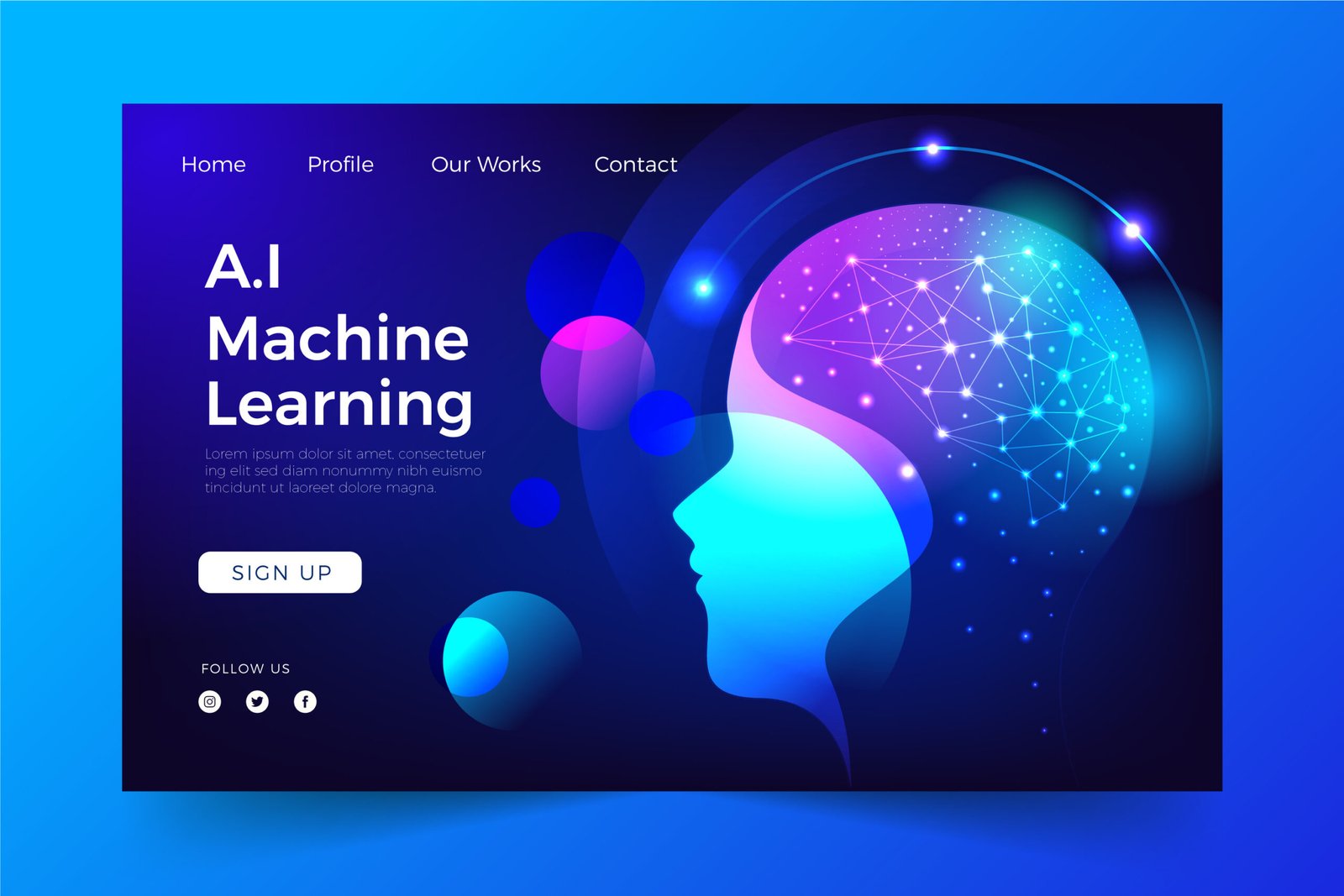Introduction to Remote Work Technology
In recent years, the landscape of remote work technology has undergone significant transformation, particularly within the B2B sector. This shift has been primarily driven by global events such as the COVID-19 pandemic, which compelled organizations to rapidly adapt to new operational paradigms. The pandemic not only accelerated the adoption of remote work but also highlighted the necessity for businesses to implement robust technology solutions to maintain productivity and collaboration among teams scattered across various locations.
As companies transitioned towards a predominantly remote workforce, a plethora of technologies emerged, each designed to facilitate different aspects of remote operations. Video conferencing platforms, such as Zoom and Microsoft Teams, became essential tools for real-time communication, enabling seamless virtual meetings and fostering connections among employees. Additionally, project management software, such as Asana and Trello, gained prominence as organizations sought methods to manage workflows and ensure accountability among remote teams. These tools have forged pathways for effective collaboration, helping businesses to continue operations despite physical distances.
Moreover, the adoption of cloud storage solutions has transformed data accessibility, allowing employees to securely access essential files from anywhere, thus fostering a more agile work environment. The rise of cybersecurity technologies also warrants attention, as securing sensitive corporate information in a distributed working environment has become paramount. The prevalence of remote work has underscored the need for comprehensive security measures to protect against potential breaches and safeguard intellectual property.
The ongoing evolution of remote work technology within the B2B sector indicates a fundamental shift in how businesses operate. As organizations embrace this new normal, understanding the implications of these technologies becomes vital. Companies must remain aware of emerging trends and continually adapt to not only thrive in today’s market but also prepare for a future where remote work will likely remain a prominent feature of the business landscape.
The Rise of Collaboration Tools
As remote work continues to transform traditional business operations, the demand for effective collaboration tools has surged. These tools are designed to facilitate seamless communication, foster teamwork, and enhance productivity among geographically dispersed teams. An array of platforms has emerged, each equipped with distinctive features that cater to specific business needs. Notably, tools such as Slack, Microsoft Teams, and Trello are becoming essential for organizations striving to maintain efficiency in a remote environment.
One of the critical features of collaboration tools is their ability to support real-time communication. Instant messaging, video conferencing, and voice calls enable team members to connect swiftly, reducing the delays often associated with email-based exchanges. Furthermore, many of these platforms offer integration capabilities with other software applications, allowing teams to streamline their workflows efficiently. For example, integrating project management tools with communication platforms allows team members to discuss ongoing tasks while simultaneously tracking progress in real-time.
The usability of collaboration tools is another essential factor contributing to their rise. Businesses require solutions that are user-friendly and easily adopted by their teams. Modern collaboration tools often feature intuitive interfaces, enabling even less tech-savvy team members to navigate effortlessly. Comprehensive training materials and customer support also enhance user experience, ensuring that organizations can maximize the full potential of these platforms.
As the landscape of remote work continues to evolve, collaboration tools must adapt to new user needs. This evolution includes the incorporation of advanced functionalities, such as AI-driven analytics to understand team dynamics better and assess productivity. Consequently, organizations that leverage these tools can cultivate an environment of collaboration that transcends physical boundaries, thereby driving efficiency and ensuring that teams remain connected and engaged, regardless of their location.

AI and Automation in Remote Work
The integration of artificial intelligence (AI) and automation into remote work environments is transforming business-to-business (B2B) operations. As organizations continue to adapt to a dispersed workforce, these technologies serve to enhance efficiency by optimizing workflows and improving overall productivity. One of the most prominent applications of AI in remote work is the development of AI-powered tools designed for task management. These tools can intelligently prioritize tasks, allocate resources dynamically, and provide insights into workload distribution. As a result, teams can focus their efforts on strategic initiatives rather than engaging in administrative overhead.
Furthermore, virtual assistants powered by AI are increasingly becoming essential in remote work scenarios. These smart assistants facilitate communication, schedule meetings, and manage calendars seamlessly. Moreover, they can conduct research, summarize information, and provide reminders, thereby enabling employees to concentrate on their core responsibilities. With the advancement of natural language processing, these tools are becoming more sophisticated, allowing for a more personalized interaction tailored to the needs of individual users.
In addition to task management and virtual assistance, AI and automation play a vital role in data analytics, particularly in the context of remote work. By leveraging machine learning algorithms, businesses can analyze large volumes of data to derive actionable insights. This capability aids in decision-making processes, allowing organizations to make data-driven choices rather than relying on intuition or incomplete information. The predictive analytics generated through AI also empower businesses to forecast trends and identify potential challenges before they arise, fostering a proactive approach in a rapidly evolving market.
In essence, the implementation of AI and automation in remote work is a game-changer for B2B operations. By streamlining workflows and enhancing decision-making with data analytics, these technologies are proving to be invaluable assets for organizations navigating the complexities associated with remote work environments.
Cybersecurity Concerns and Solutions
As remote work becomes increasingly prevalent in B2B environments, cybersecurity represents a critical concern for organizations navigating this new landscape. With a significant number of employees working from home, companies face heightened risks of data breaches and cyber threats. These vulnerabilities can stem from unsecured networks, inadequate personal device security, and human error. The reality is that home networks are often less secure than corporate environments, making them attractive targets for cybercriminals.
One of the most common vulnerabilities is the use of weak passwords and lack of multi-factor authentication. Employees may inadvertently expose sensitive company data by accessing corporate resources over a public Wi-Fi network without a Virtual Private Network (VPN). This highlights the necessity for implementing robust security protocols that extend beyond traditional office setups. Organizations must take proactive steps to educate employees about these risks and enforce security policies that emphasize safe online behaviors.
To ensure data safety in remote work arrangements, businesses should adopt several best practices. Regular training and awareness programs focused on cybersecurity can significantly reduce the likelihood of human error. Moreover, deploying advanced cybersecurity tools such as endpoint detection and response (EDR) solutions can enhance monitoring and protection of devices outside the corporate firewall. Additionally, utilizing secure collaboration platforms with built-in encryption can help safeguard communications and data sharing.
Technological innovations also play a crucial role in fortifying cybersecurity measures. Artificial intelligence and machine learning are increasingly being leveraged to identify potential threats in real time, thus enabling companies to respond swiftly to security incidents. By embracing a comprehensive cybersecurity framework that includes both technology and employee training, organizations can effectively mitigate risks associated with remote work, ensuring a secure and productive environment.

Employee Well-Being and Engagement Tools
The paradigm of remote work is shifting the focus towards employee well-being and engagement, making it a critical area for businesses to address. With the rise of remote working, companies are increasingly recognizing the necessity of fostering mental health and a sense of belonging among their workforce. This has led to the development and adoption of various tools and platforms specifically designed to support employee well-being.
One notable trend is the utilization of mental health applications that offer resources for stress management, mindfulness exercises, and access to professional counseling. These tools not only assist employees in navigating the challenges associated with remote work but also enhance their resilience and overall engagement levels. By prioritizing mental health, businesses can mitigate burnout and enhance productivity, creating a more positive work environment.
In addition to mental health platforms, engagement tools that facilitate communication and collaboration are becoming vital components of remote workplace culture. Platforms such as virtual team-building activities and recognition software promote social connections, helping employees feel more engaged with their teams and the organization at large. These applications enable regular check-ins and feedback loops, allowing managers to gauge engagement levels and adapt their strategies accordingly.
Moreover, companies are leveraging data analytics to monitor employee engagement metrics. By employing performance and well-being dashboards, organizations can identify trends and areas for improvement, ensuring that no employee feels isolated or undervalued. The use of these analytics not only drives accountability among leadership but also fosters a culture of transparency.
Ultimately, adopting employee well-being and engagement tools is essential for companies navigating the future of remote work. By investing in these technologies, businesses can create a more connected and supportive work environment, leading to improved job satisfaction, retention, and overall organizational success.
The Role of Virtual and Augmented Reality
As businesses navigate the evolving landscape of remote work, the integration of virtual reality (VR) and augmented reality (AR) technologies is becoming increasingly significant, particularly in the B2B sector. These innovative tools offer profound enhancements to training, simulation, and collaboration, thereby facilitating more effective remote interactions among distributed teams. One notable advantage of VR and AR is their ability to create immersive environments that replicate in-person experiences, allowing team members to engage more holistically despite physical distances.
In the realm of training, VR can provide realistic simulations that enable employees to practice skills in a controlled environment. For instance, a company in the manufacturing sector might utilize VR to train technicians on complex machinery. Trainees can interact with a virtual version of the equipment, enhancing their understanding and readiness without the risks associated with using real machinery. Similarly, AR can enhance on-the-job training by overlaying digital information onto real-world environments. For example, technicians might use AR glasses to receive real-time instructions while performing repairs, thus reducing errors and downtime.
Collaboration is another area where VR and AR technologies shine. These tools enable remote teams to meet in virtual spaces, where members can share information, brainstorm ideas, and solve problems together as if they were present in the same room. A case study involving a global architecture firm illustrates this potential; they utilized VR to conduct design reviews with stakeholders across multiple countries. This approach not only improved engagement but also led to faster decision-making processes, showcasing how virtual environments can strengthen team dynamics and foster creativity.
As these technologies continue to evolve, companies embracing VR and AR stand to gain a competitive edge in the fast-paced world of B2B interactions. By utilizing immersive experiences, businesses can pave the way for enhanced productivity, collaboration, and innovation, significantly shaping the future of remote work.
Flexible Workspaces and the Hybrid Model
The rise of remote work technology has led to significant transformations in the business landscape, particularly in the structuring of work environments. Flexible workspaces and hybrid models that incorporate both remote and in-office work are emerging as crucial trends within the B2B sector. These strategies not only cater to the evolving preferences of the workforce but also address the need for adaptability in organizational frameworks.
Technology plays a pivotal role in shaping these new work models, facilitating seamless communication and collaboration between remote and in-person teams. Advanced tools such as video conferencing platforms, project management software, and cloud-based solutions are essential components that enable businesses to maintain productivity, irrespective of the physical location of employees. This technological integration enhances the ability of teams to work cohesively, fostering a spirit of collaboration even in a flexible workspace setup.
The implications for office layouts are significant. Traditional cubicle formats are gradually being replaced with adaptable spaces designed for collaboration and interaction. This shift necessitates a reevaluation of how office real estate is utilized, with an emphasis on creating environments that promote engagement among employees who might not be in the office every day. By adopting an open-plan design or incorporating shared resources, businesses can support a culture of teamwork while still accommodating individual work styles.
Moreover, enterprises looking to implement hybrid models can leverage technology to facilitate these transitions. Tools that manage scheduling, ensure secure access to important data, and maintain communication can help organizations navigate the complexities of a hybrid workforce. By fostering a culture of flexibility and equipping employees with the right technological resources, businesses can effectively capitalize on the strengths of a diverse work environment, ultimately enhancing operational efficiency and employee satisfaction.
Future Trends and Predictions
The evolution of remote work technology in B2B sectors is increasingly characterized by several key trends that are expected to shape the future of how businesses operate. A significant advancement is the rise of cloud computing, which provides adaptable, scalable solutions that enhance collaboration among dispersed teams. Cloud platforms enable seamless access to tools and resources, contributing to increased productivity and streamlined communication. As organizations continue to leverage these technologies, the reliance on cloud-based applications will only deepen, facilitating more integrated work environments.

Alongside cloud computing, there is a notable shift towards decentralized workforces. This trend is fueled by businesses recognizing the advantages of hiring talent from diverse geographical locations, thus expanding their pool of expertise. The decentralized model promotes a more agile approach, allowing organizations to respond swiftly to market changes while improving flexibility for employees. This transformation necessitates robust remote work technology that can support team cohesion and mitigate potential challenges related to time zone differences and communication barriers.
Moreover, the integration of diverse technology solutions is expected to play a fundamental role in the future of remote work in B2B. As organizations seek unified platforms that offer project management, communication, and collaboration tools, there will be a growing emphasis on technology stacks that function harmoniously together. Businesses must be prepared to invest in systems that not only support their current needs but also allow for future scaling and adaptability.
In conclusion, the future of remote work technology in B2B environments is poised for dynamic innovation. By monitoring these emerging trends, organizations can strategically position themselves to capture the benefits that come with advancements in cloud computing, decentralized workforce models, and integrated tech solutions. Doing so will be essential in ensuring competitiveness in an increasingly digital business landscape.
Conclusion: Embracing Change for Future Success
As we traverse further into the landscape of remote work technology within the B2B sector, it is evident that the ability to adapt swiftly and effectively is essential for ongoing success. The discussion surrounding emerging trends, including the integration of artificial intelligence, enhanced cybersecurity measures, and the rise of virtual reality for remote collaboration, underscores a pivotal shift in how organizations operate. These technologies not only provide solutions to the challenges faced in remote settings but also open up new opportunities for efficiency and innovation.
Businesses must recognize that embracing change is not merely a reaction to current circumstances, but a proactive strategy that can leverage remote work technology to its fullest potential. By staying informed about advancements and actively participating in the evolution of these tools, organizations can secure a competitive edge. This means fostering a culture that prioritizes continuous learning and agility, ensuring that employees are equipped to make use of the latest technologies effectively.
Moreover, collaboration among teams becomes imperative as they navigate this diverse technological landscape. Encouraging communication and idea-sharing facilitates a smoother transition into new methods of working, which can mitigate resistance and enhance overall productivity. As this sector continues to evolve, organizations that prioritize proactive adoption and experimentation with remote technologies are likely to thrive.
In conclusion, the future of remote work technology in the B2B sector presents myriad possibilities that can enhance operational dynamics. By adhering to a philosophy of continuous improvement and adaptability, businesses can position themselves not just to survive but to succeed in a rapidly changing marketplace. Embracing this change is the cornerstone of sustainable growth and resilience in the modern business environment.





